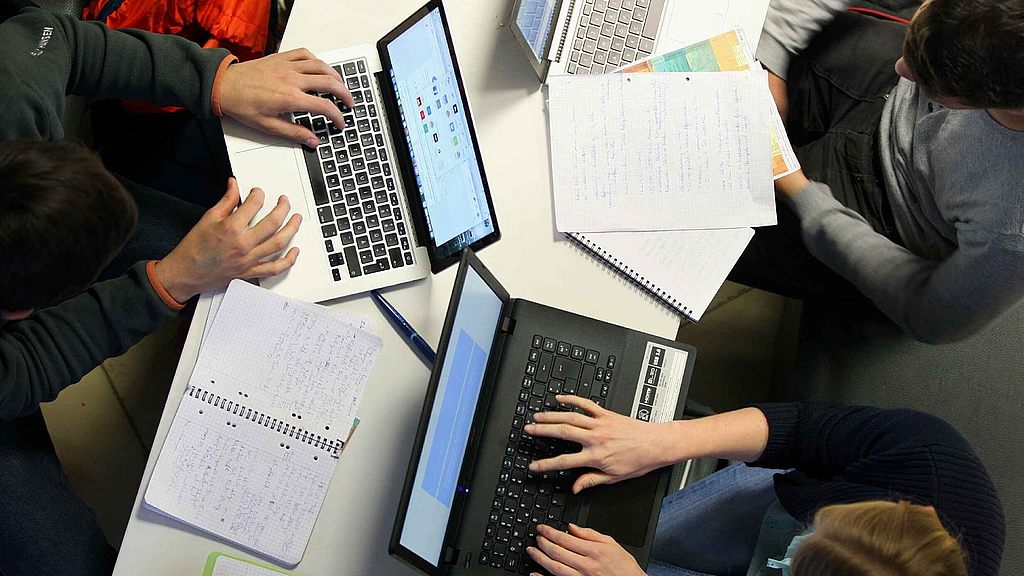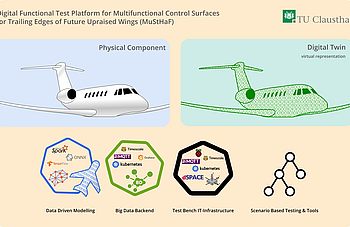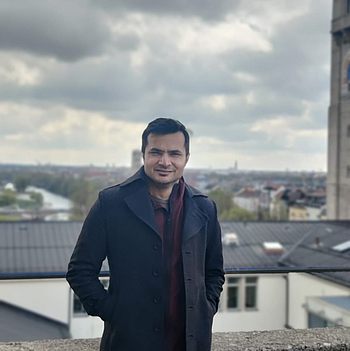MuStHaF - Digital Functional Test Platform for Multifunctional Control Surfaces for Trailing Edges of Future Upraised Wings
The project MuStHaF addresses application-oriented research and development for the design of the next generation of short- and medium-range aircrafts with market entry between 2027 and 2030. MuStHaF aims to develop a multifunctional control surface system at the trailing edge to enable a high-pitched aircraft wing. TU Clausthal is providing support to the project through the implementation of the following subprojects.
- Development of a scenario-based real-time simulation environment for functional demonstration for multifunctional flap systems, which can reduce the effort for testing system functions in operational scenarios.
- Development of a virtual test bench for multifunctional damper systems with the use and further development of digital twin technologies, which reduces the utilisation of the mechanical test bench.
One of the biggest challenges in developing complex cyber physical systems, such as this one in MuStHaF, is their verification and validation. It is crucial to prove the safe operation of the system over the entire operational scope of the function provided. Therefore, scenario-based testing is becoming increasingly popular. However, there is a large gap in technical solutions on how to specify test scenarios, how to integrate them into test benches and how to execute them for functional testing. This sub-project addresses this problem by developing a scenario-based functional demonstrator for MuStHaF.
Furthermore, test benches are cost-intensive infrastructures. Their use is expensive and requires large resources. This limitation prevents agile feedback loops through the development life cycle of the control system. In this subproject, digital twin technologies are used to develop a virtual test bench for MuStHaF that allows testing of the functions with the digital twin of the mechanical test bench in the control loop.
The MuStHaF project is based on close cooperation between the collaborators in the field of research (DLR, TUC, TUBS), the OEM (Airbus) and the contribution of the actuator manufacturer Volz.
Contact





